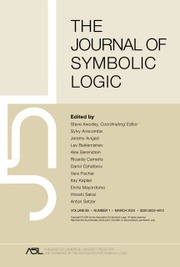Crossref Citations
This article has been cited by the following publications. This list is generated based on data provided by Crossref.
Bryant, David
Huber, Katharina T.
Moulton, Vincent
and
Tupper, Paul F.
2023.
Diversities and the Generalized Circumradius.
Discrete & Computational Geometry,
Vol. 70,
Issue. 4,
p.
1862.



